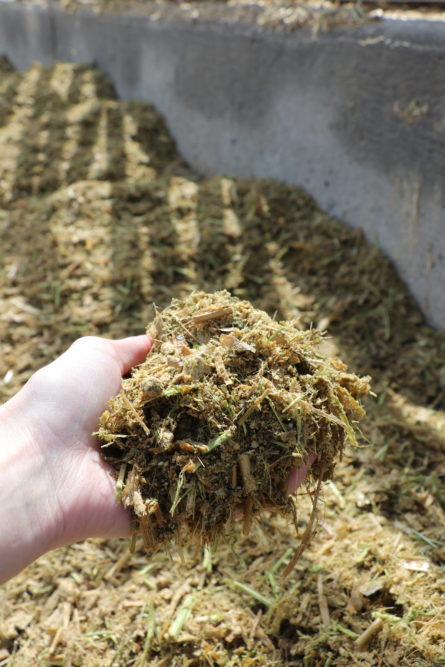Yeast products are commonly used in dairy cow diets, but we are often asked whether they should be used and if it matters if the live or inactivated products are included. The body of scientific knowledge continues to increase around the value of providing yeast in dairy diets, demonstrating the value of its inclusion.
In addition to which type of yeast to use, the decision is driven primarily by animal health and wellbeing, followed closely by the financial implications. These two drivers ultimately determine the profitability of the herd, and therefore the farm enterprise viability. But to understand the value of yeast, you first need to understand ruminal acidosis and the implications it can have at a cow and industry level.
Ruminal acidosis – a key challenge
Ruminal acidosis is a digestive disorder that can manifest itself in either clinical or sub-clinical forms. It affects cows of different ages and stages of lactation and occurs for multiple reasons. When functioning normally, the rumen has a pH of approximately 6.5 to 7.0. While the definition of acidosis is not consistent, it is generally considered to be when rumen pH falls below 5.8 for a period of at least five hours. Subacute ruminal acidosis has been considered one of the most important nutritional diseases to the dairy industry due to the impact it has on dry matter intake, milk production and milk components.
Tackling ruminal acidosis with yeast products
The use of live yeast and yeast cultures (or fermented/inactivated/dead yeast) have a long history in the ruminant nutrition market. Yeast of Saccharomyces cerevisiae origin, the most common in commercial use today, exists both in the form of live yeast and yeast culture, and has a large body of research and information gathered on them to allow its benefits and functionality to be assessed. When tackling ruminal acidosis, the function and effectiveness of these products should certainly be a consideration to allow the greatest impact on the health and wellbeing of the animal.
Live yeast products are fermentable living yeast cells that are quantified by number of colony-forming units (CFU). Yeast is classified as single cell members of the fungus family (eukaryotes) and has shown through multiple research studies (albeit with varying results) to improve rumen function, with consequent effects on animal performance.
The mode of action of live yeast and how it alleviates ruminal acidosis has been studied. However, there does not seem to be a clear consensus on the main function. In short, prevention of a drop in rumen pH is associated with a reduction in rumen lactate concentration. How this happens can be through several mechanisms, such as the scavenging of oxygen by live yeast colonies to increase anaerobic fermentation. This stimulates further fiber digestion, which allows for more beneficial volatile fatty acids to be produced, such as propionate, acetate and to a lesser degree, butyrate.
Yeast cultures are produced through the fermenting of cereal grains in a selected liquid with baker’s yeast and then drying the whole medium culture. This culture then may contain yeast cell walls (mannan-oligosaccharides and beta-glucans), protein sources, vitamins, antioxidants, as well as a host of other nutrients. Some components of yeast cultures have research showing their benefit on rumen function as well as animal performance.
However, it appears to be the yeast cell wall which has the largest effect on performance. In the rumen, yeast cultures act as a source of nutrition for microbiota. In essence, they stimulate the growth of lactic acid- utilizing bacteria, stabilizing the rumen pH as a result.
One of the questions that arises around live yeast is its ability to survive in the harsh acidic environment of the rumen. Numerous research papers have shown the positive animal response following supplementation with live yeast, including production responses, so this question is one we can consider addressed. Furthermore, there has been validation via many studies assessing various coating methods and the subsequent viability following pelleting at high temperatures.
Which one to use in the diet?
The mechanisms of both live yeast and yeast cultures appear to end with a similar response: a prevention in rumen pH dropping or a recovery from a rumen pH drop to more normal levels. Offering both probiotic and prebiotic effects in the form of yeast cultures does have benefits. The mode of action is different than that of live yeast and may have a synergistic effect. A nutrition source for beneficial bacteria, along with the other nutrients that are contained within yeast cultures, will certainly support rumen function in times when acidosis is a challenge.
However, the use of live yeast with an effective coating to survive the acidic conditions of the rumen has several mechanisms. All contribute to better rumen performance, and there is a large body of evidence to support this. Whether this is through scavenging oxygen to improve anaerobic conditions, selectively enhancing bacteria that utilize lactate or by aiding the breakdown of fiber, it has shown in numerous studies to be effective.
The specifications of live yeast (dose rate, coating, strain of yeast used) should be a consideration when assessing the benefits of inclusion in the dairy cow diet. Similar scrutiny should exist for yeast cultures, including concentration of beta-glucans, mannan-oligosaccharides and other nutrients.
Finally, there may be a place for both types of yeast products in the diet, given at specific time points to obtain the most beneficial effect. The challenges of the dairy cow are many, and use of these products can alleviate these challenges, reducing stress for both the cow and, therefore, the farmer.







